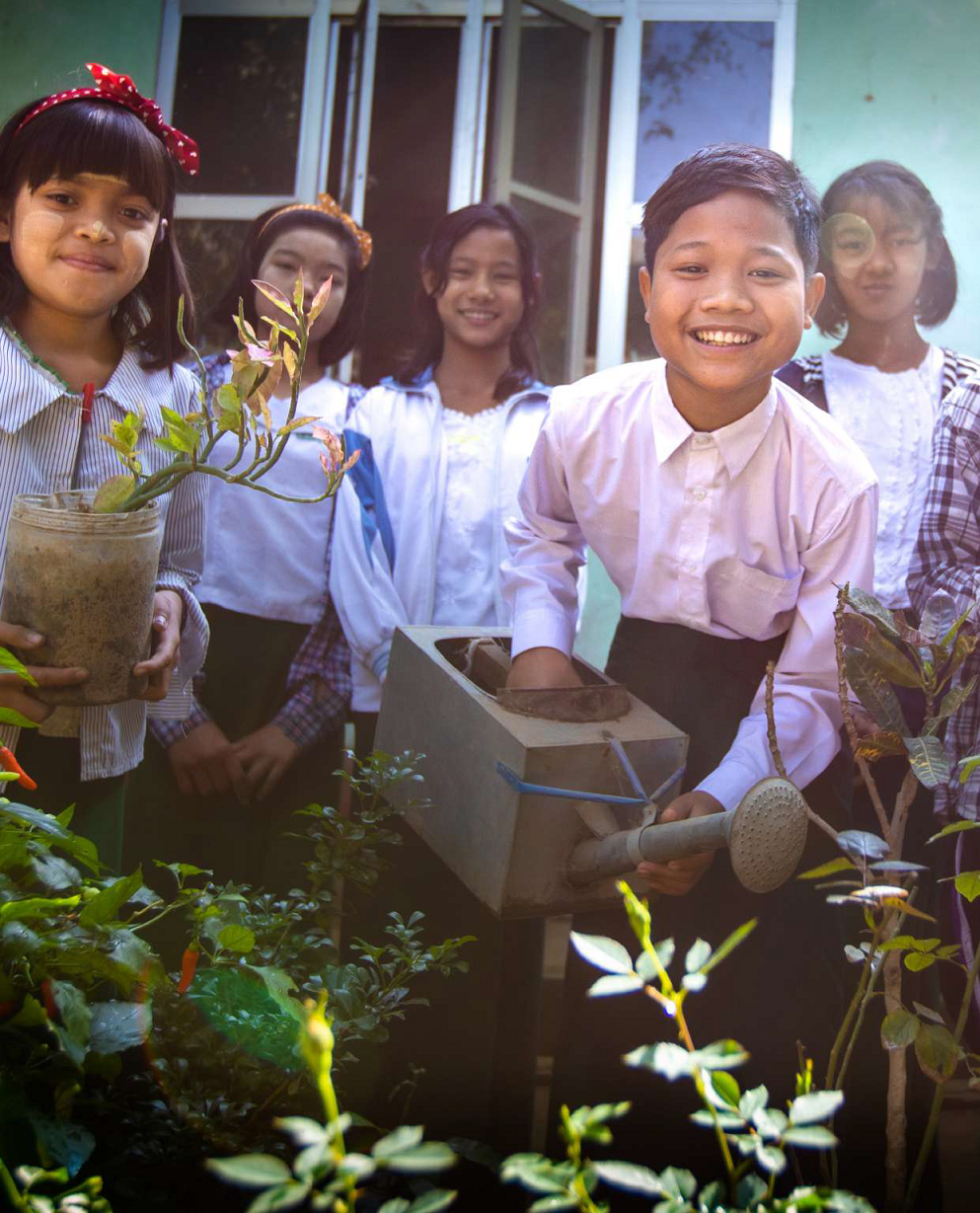Guardians of the Planet: Asia Pacific Children and Youth Voices on Climate Crisis and Disaster Risk Reduction

Introduction
The Asia-Pacific region is home to 60% of the world’s population and a growing magnitude of climate-related disasters. Children and youth are particularly at risk, but also innovative agents of change. They are the present and future guardians of the planet. Hearing children and youthvoices and ensuring their participation is critical not only to effective risk reduction but also to upholding children and youth’s rights.
In preparation for the 2020 Asia-Pacific Ministerial Conference for Disaster Risk Reduction, a Task Force was joined by World Vision, Save the Children, Plan International, UNICEF and the United Nations Major Group for Children and Youth (UNMGCY). Through online and face-to-face consultations, the Task Force created a platform for children and youth to share their perspectives, experiences and contribution related to disaster risk and the climate crisis. The platform also raises awareness and builds capacity for children and youth to respond to climate change and disasters.
This report on the findings of the consultations is for children and youth to have genuine participation in disaster risk reduction and climate change adaptation, and recognize them as “agents of change.”
*Download the full publication from the right-hand column.The key messages from the publication are provided below. See the full text for much more detail.
Methodology
Between August 2019 and January 2020 almost 10,000 children and youth in Asia and the Pacific participated in online and face-to-face consultations. Countries represented are Bangladesh, Cambodia, China, India, Laos, Mongolia, Myanmar, Nepal, Pakistan, the Philippines, and the Solomon Islands.
Online consultations began with a survey of 26 questions, translated and contextualized into 12 versions, reflecting local languages, child-friendly languages, cultural differences, and the needs of participants. Several survey platforms were used, ranging from Survey Monkey, U-Report and wjx.cn to tablets.
Face-to-face consultations followed a three-step methodology:
- Discussion among different age groups on children and youth’s knowledge, experiences, recommendations and contribution, facilitated by children and youth themselves
- Reporting of discussion results by age group representatives, and consolidation into an overall statement by facilitators and age group representatives
- Presentation of findings and recommendations by children and youth to governments and non-government stakeholders
Key messages
The climate crisis is both a concern and a danger for children and youth. A combined 26% of children and youth ranked either the climate crisis or disaster impacts as their primary concern for the future. Over 99% reported experiencing disaster risks in the past year, and 77% reported having noticed more disasters locally in the past two years.
Inclusion is of high importance to children and youth. Participants identified children and youth themselves, followed by the elderly and people with disability, as the most vulnerable groups in the climate crisis. Children and youth with disabilities experience various challenges, including access to education, limited mobility, and social distance, which hinder the capacity for disaster risk reduction. Yet they do not receive adequate support to overcome such difficulties.
Children and youth obtain climate knowledge through various educational channels. Children and youth believe they have above average knowledge when it comes to climate change and disasters. Learning channels are not limited to formal education but also news and social media. Children and youth recommend further integrating resilience building into schools’ curriculum.
Recommendations
Children and youth recommend further investment in:
- Skills-based learning and community-focused advocacy education
- Psychological support and disability-friendly services for capacity building and preparedness
- Structural and infrastructural resilience and risk-informed development programmes
- Innovative finance and research tools.
They also call for stronger enforcement and implementation of laws, policies and regulations concerning environmental protection, climate change mitigation, and sustainable waste and energy management.
Last but not least, the needs of children and youth and people with disability, as well as their voices and participation should inform climate change adaptation and disaster risk reduction processes. Meaningful engagement through different consultation avenues needs further exploration.
Suggested citation
Chan C. et al (2020) Guardians of the planet: Asia Pacific Children and Youth Voices on Climate Crisis and Disaster Risk Reduction. World Vision International.https://reliefweb.int/report/world/guardians-planet-asia-pacific-children-and-youth-voices-climate-crisis-and-disaster
Further readings
Related resources
- Prepare Children to Deal with Disaster and Climate Impacts
- Climate change, young women and girls: Understanding vulnerability, impacts and adaptation in Northern Thailand
- Child-Centred Community-Based Climate Change Adaptation in the Philippines: Guidance Document for Local-level indicators
- Y-Adapt Youth-Led Action Phase!
- Child-Centred Climate Resilience
(0) Comments
There is no content